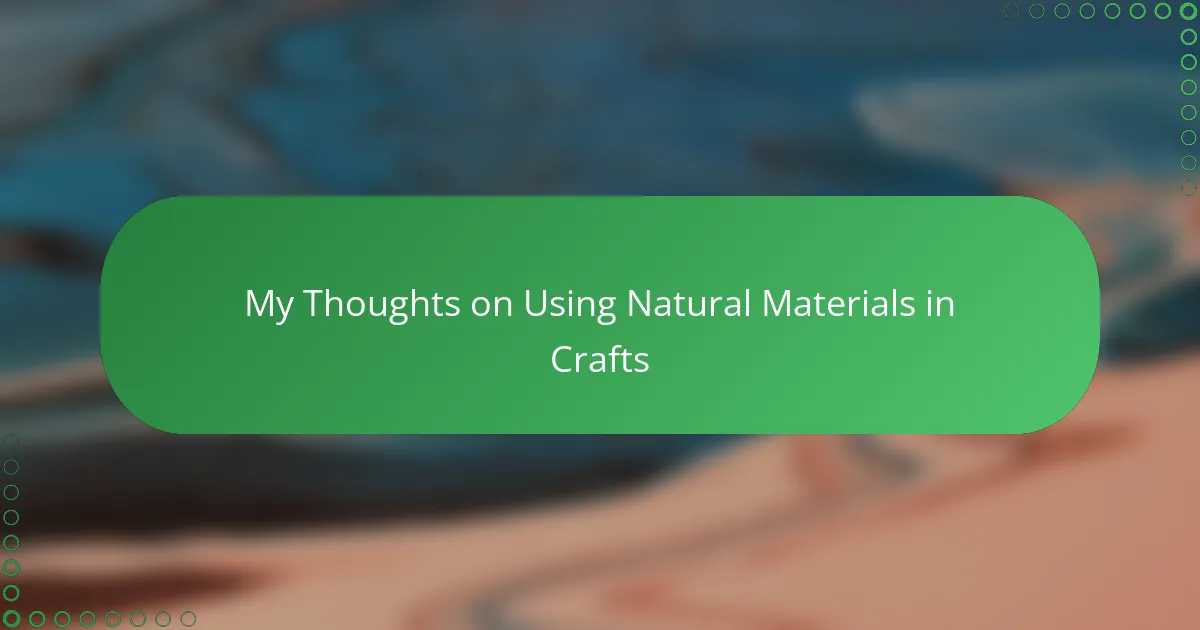Key takeaways
- Handmade paper crafts embody creativity, patience, and a connection to nature, making each piece unique due to its irregularity.
- Using natural materials, such as cotton and hemp, enhances authenticity and sustainability, allowing crafters to feel a deeper connection to the environment.
- Techniques like soaking fibers and embedding natural elements enhance the crafting experience and the final product’s uniqueness.
- Embracing challenges, such as variability in natural materials, fosters patience and a deeper appreciation for the craft and its imperfections.
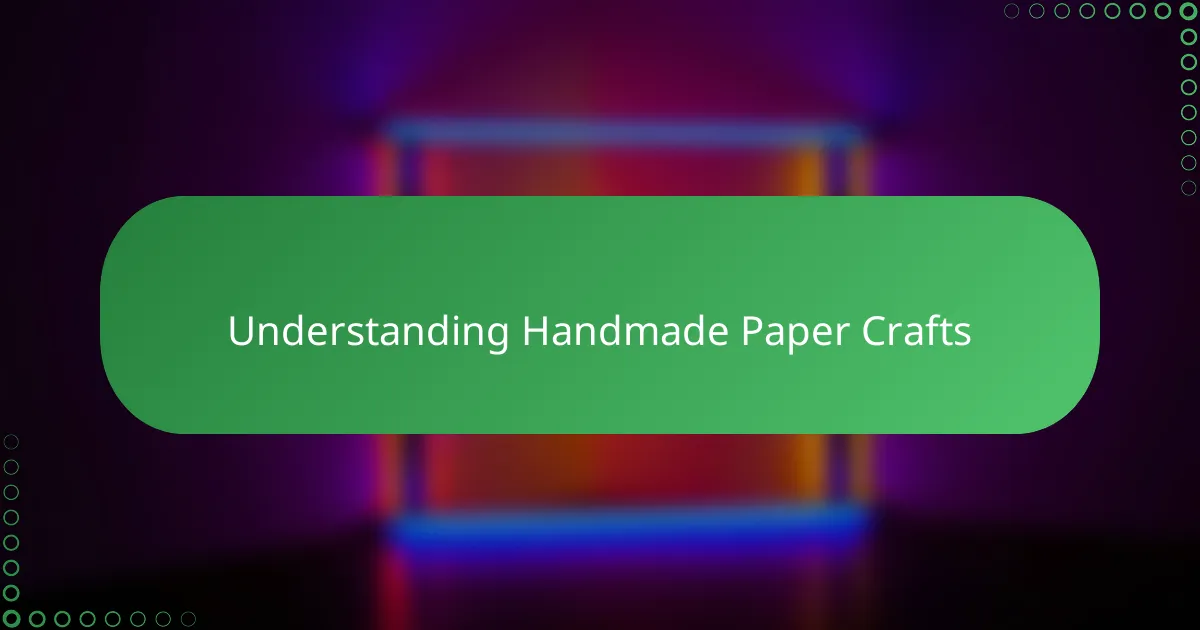
Understanding Handmade Paper Crafts
Handmade paper crafts have always fascinated me because they embody a unique blend of creativity and patience. When you hold a piece of handmade paper, you’re not just feeling the texture; you’re connecting with the intricate process behind it. Have you ever wondered how fibers and natural materials transform into a delicate sheet filled with potential?
What makes handmade paper so special is its irregularity and charm—each sheet carries subtle imperfections that speak to the artisan’s hand. I recall my first attempt at crafting paper, and though it was far from perfect, the tactile experience was incredibly rewarding. It taught me that this craft is as much about the journey as the final product.
Understanding the basics of handmade paper—like the pulp preparation, sheet formation, and drying—can deepen your appreciation for every piece created. It’s this knowledge that invites us to slow down and respect the time and skill involved. Isn’t that what makes handmade crafts truly meaningful in today’s fast-paced world?
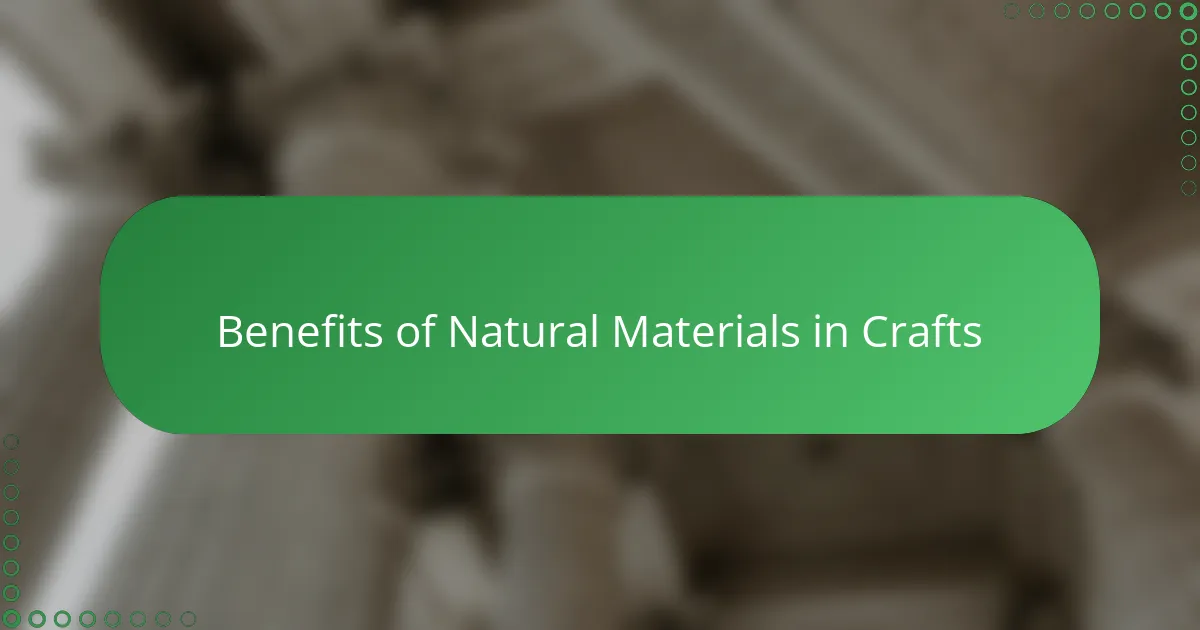
Benefits of Natural Materials in Crafts
Using natural materials in crafts adds a layer of authenticity that synthetic alternatives just can’t match. I’ve noticed how the textures and colors from natural fibers bring a warmth and life to my handmade paper that feels genuinely organic. Isn’t it amazing how you can almost sense the story behind each fiber when it comes from nature?
Another benefit I’ve found is the sustainability angle. Crafting with natural components not only reduces waste but also connects me more deeply to the environment. Have you ever felt that quiet satisfaction knowing your craft respects the planet as much as your creativity?
Lastly, natural materials often challenge you in unique ways. Their unpredictability means every piece demands attention and care, making the finished product feel even more special. That sense of accomplishment—that this beauty emerged from humble, raw elements—is something I treasure every time I craft.
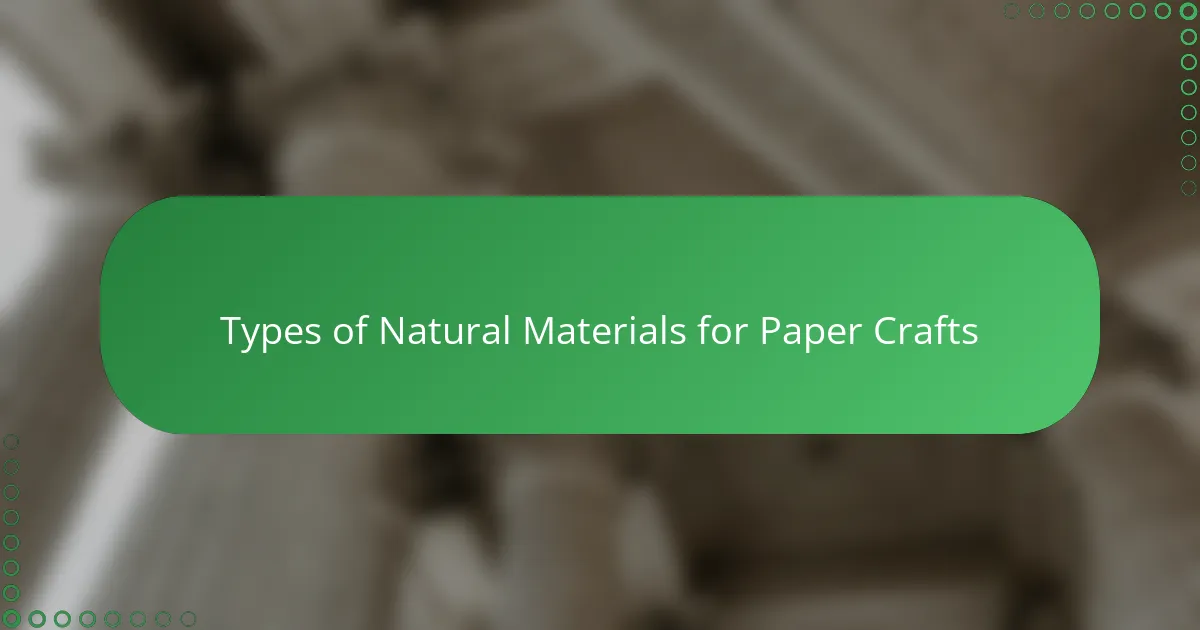
Types of Natural Materials for Paper Crafts
When I started exploring natural materials for paper crafts, my first go-to was cotton fibers. Cotton has this softness and strength that make the paper sturdy yet gentle to touch. Have you ever noticed how cotton-based handmade paper feels comforting, almost like a fabric you want to hold onto?
Another fascinating material I often experiment with is hemp. Its coarse texture gives paper a rustic character that I find deeply charming. Working with hemp fibers does require patience, but the result is this beautifully textured sheet that tells its own earthy story.
I’ve also dabbled in using plant fibers like flax and mulberry bark, which introduce delicate lines and subtle hues to the paper. Each type brings something unique, reminding me that the choice of natural material isn’t just about function—it’s about channeling nature’s diversity into every creation. Isn’t it wonderful how these materials invite us to connect directly with the natural world through art?
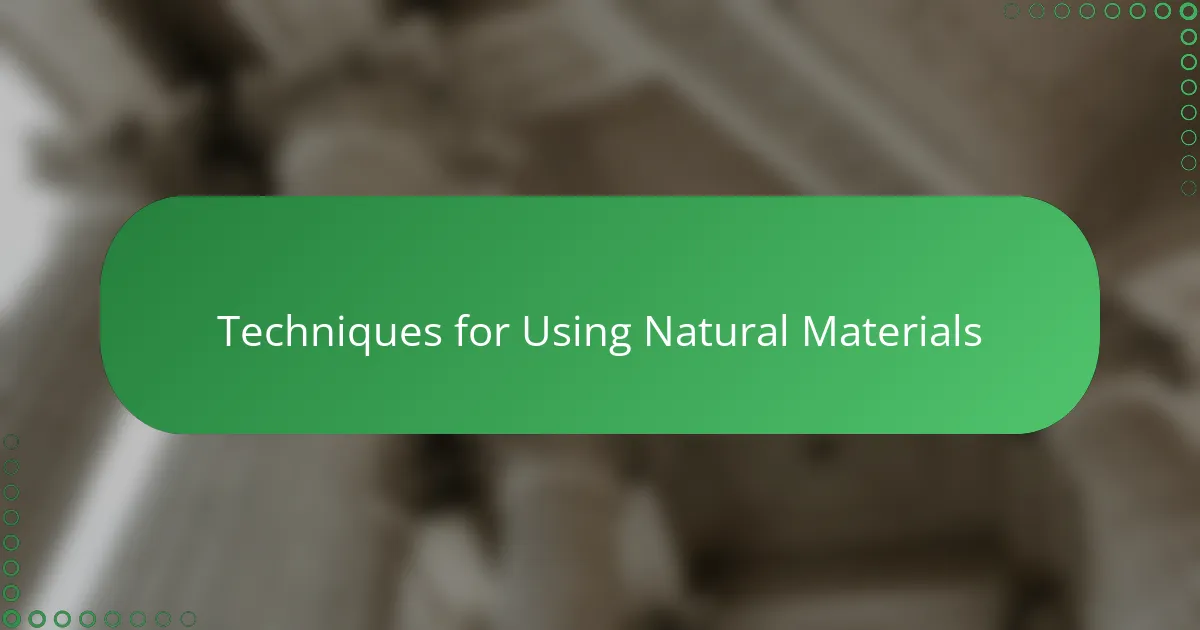
Techniques for Using Natural Materials
One technique I often use when working with natural materials is soaking fibers thoroughly before turning them into pulp. This softens the fibers, making them more pliable and easier to mold, which results in a smoother, more consistent sheet of paper. Have you ever felt how the texture changes after soaking? It’s like the fibers awaken, ready to be shaped.
Another approach I enjoy is embedding small natural elements—like petals or thin leaves—into the wet pulp. It requires patience because you have to place them carefully, but the reward is a piece of paper that carries nature’s imprint. I remember the first time I tried this; watching the delicate petals settle was like capturing a moment of nature’s beauty forever.
I also recommend experimenting with layering different fibers during sheet formation. Combining coarse and fine materials can create interesting textures and strengths. At times, this layering feels like orchestrating a subtle symphony of textures, and the final tactile experience makes the effort worthwhile. Have you tried mixing fibers to see what surprises emerge? It’s a fun way to push your creativity.
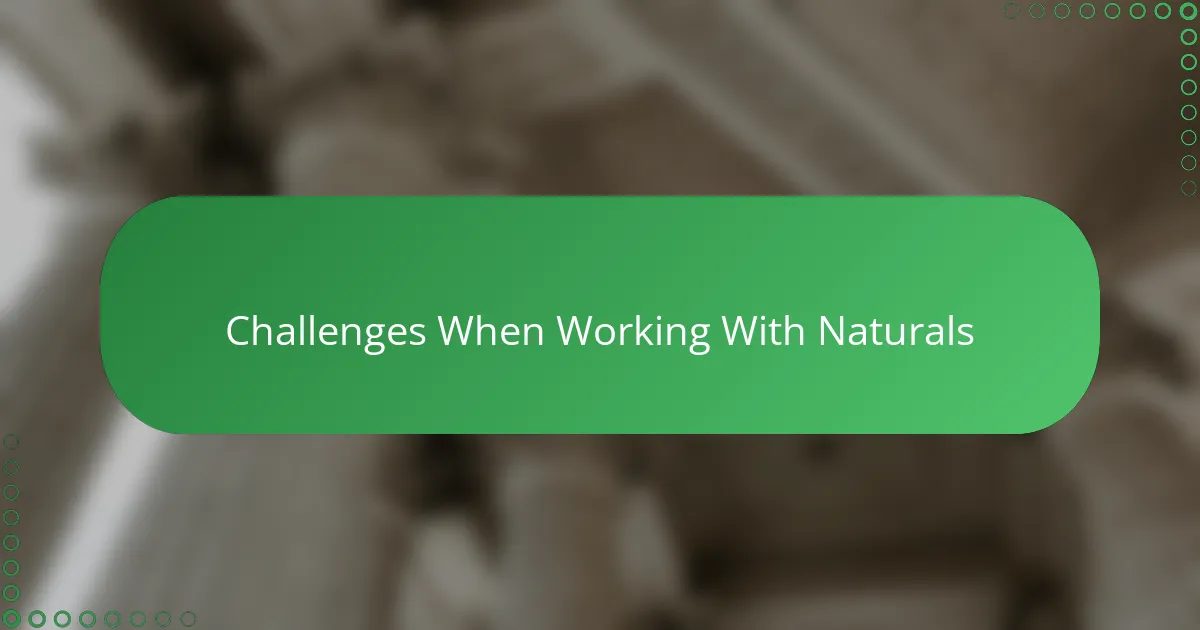
Challenges When Working With Naturals
Working with natural materials isn’t always smooth sailing. I’ve found that their variability can be both a blessing and a headache—one batch of fibers might behave perfectly, while the next feels stubborn and unpredictable. Have you ever struggled to get consistent results because nature doesn’t follow strict rules?
Another challenge I often face is the moisture content in natural fibers. Sometimes, the drying process takes much longer than I expect, leading to warping or uneven textures that test my patience. It reminds me that working with naturals means accepting a little imperfection and adapting on the fly.
Lastly, sourcing quality natural materials can be tricky. I’ve learned the hard way that not all fiber batches are created equal, and finding a reliable supply requires time and trust. It makes me appreciate even more the handmade papers that come from artisans who’ve mastered this delicate balance.

Personal Experiences With Natural Materials
There was a moment early on when I gathered leaves and flowers from my garden to add into my handmade paper pulp. Watching those natural pieces gently settle and become part of the paper felt like weaving a small part of nature’s story into my craft. Have you ever had that quiet thrill of seeing everyday natural elements transform into art right before your eyes?
Sometimes, the texture of a paper I made with wild grasses surprised me with its roughness, reminding me that nature doesn’t conform to expectations. It pushed me to slow down and accept imperfections instead of chasing perfection. Isn’t it fascinating how working with natural materials teaches patience in such a tactile way?
I also recall the joy of sourcing fibers from local plants, feeling a connection not just to the craft but to the place itself. That hands-on experience made every sheet I created feel like a tribute to both nature and community. Have you noticed how natural materials can sometimes deepen your sense of belonging to your environment?
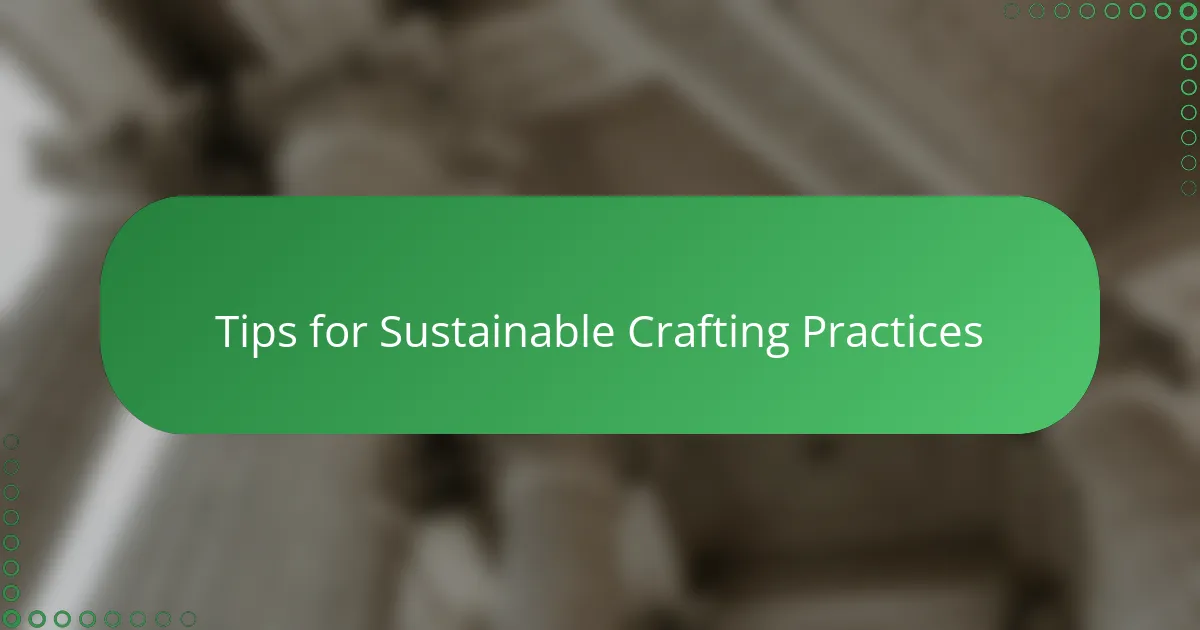
Tips for Sustainable Crafting Practices
One practice I’ve found invaluable is reusing scraps and leftover pulp instead of tossing them away. It not only reduces waste but also stretches your materials further, making every bit count toward your next project. Have you tried turning paper remnants into new sheets? It’s surprisingly satisfying, like giving your craft a second life.
Choosing non-toxic, natural dyes and adhesives has also become a priority for me. Using safer alternatives protects not just the environment but your health, especially during long crafting sessions. Doesn’t it feel better knowing your creative space is free from harsh chemicals?
Lastly, I try to support local and ethical sources for my natural materials whenever possible. This approach not only fosters community but also ensures the supply chain is mindful of ecological impact. How often do we think about where our fibers come from? For me, this awareness adds a deeper meaning to every sheet I make.
